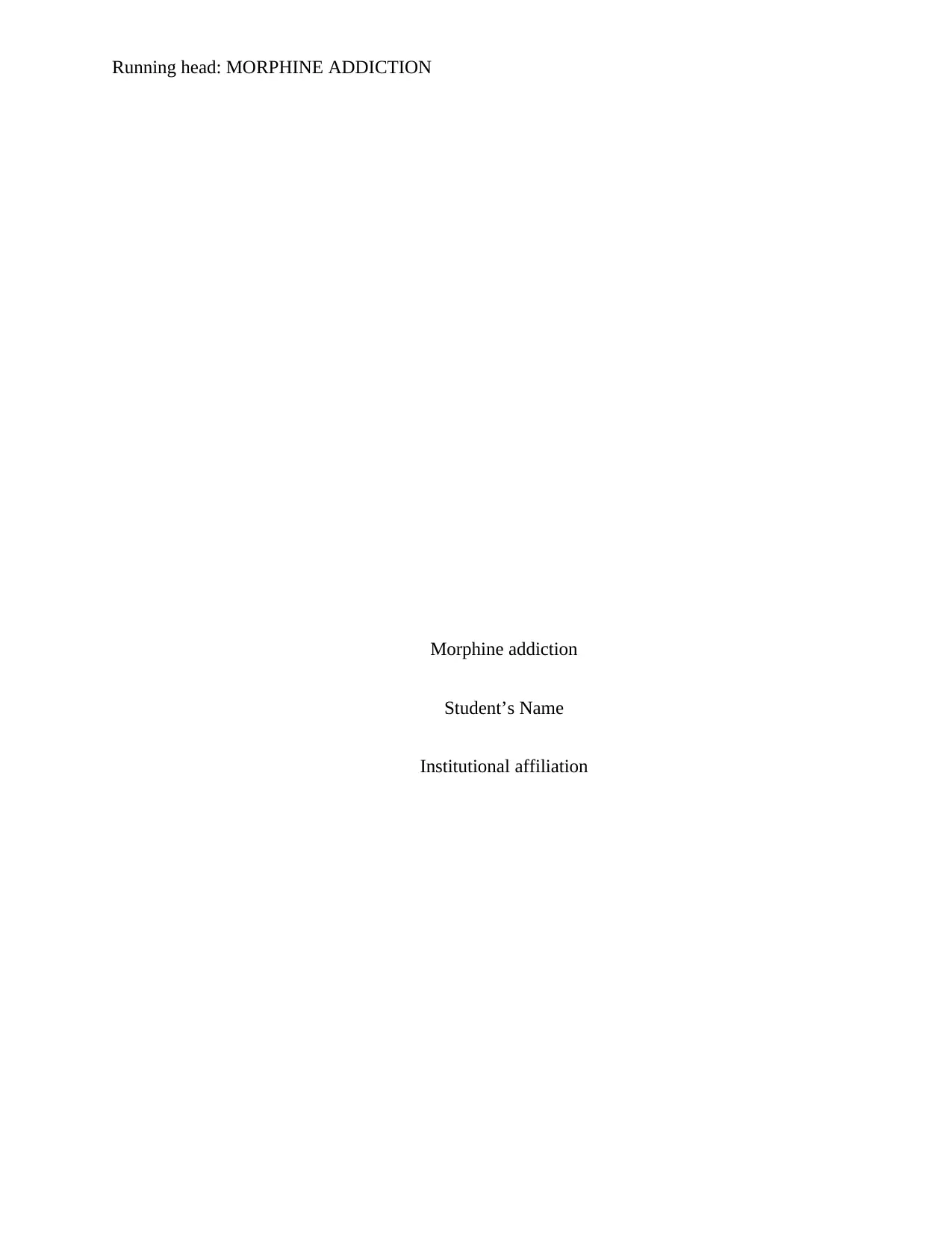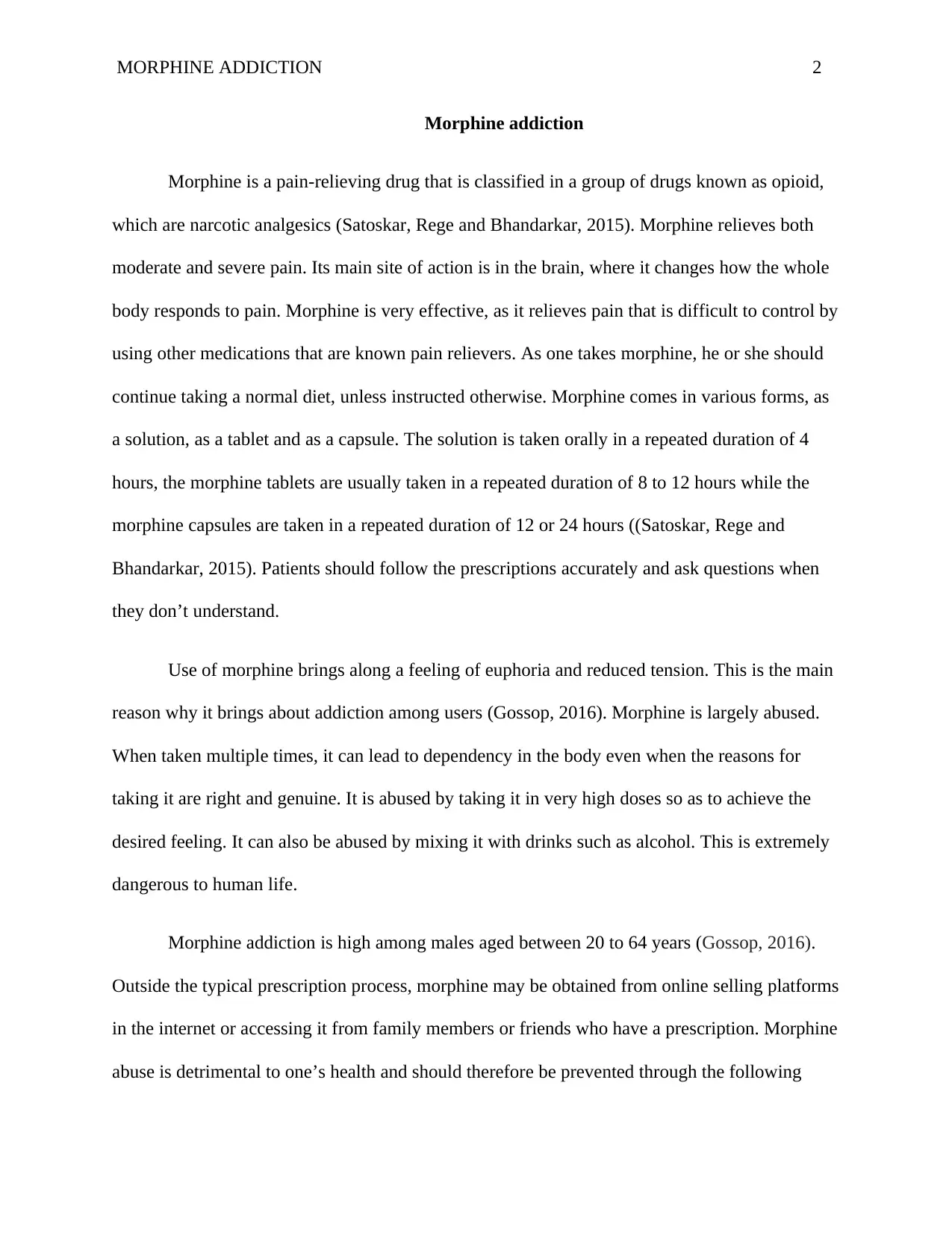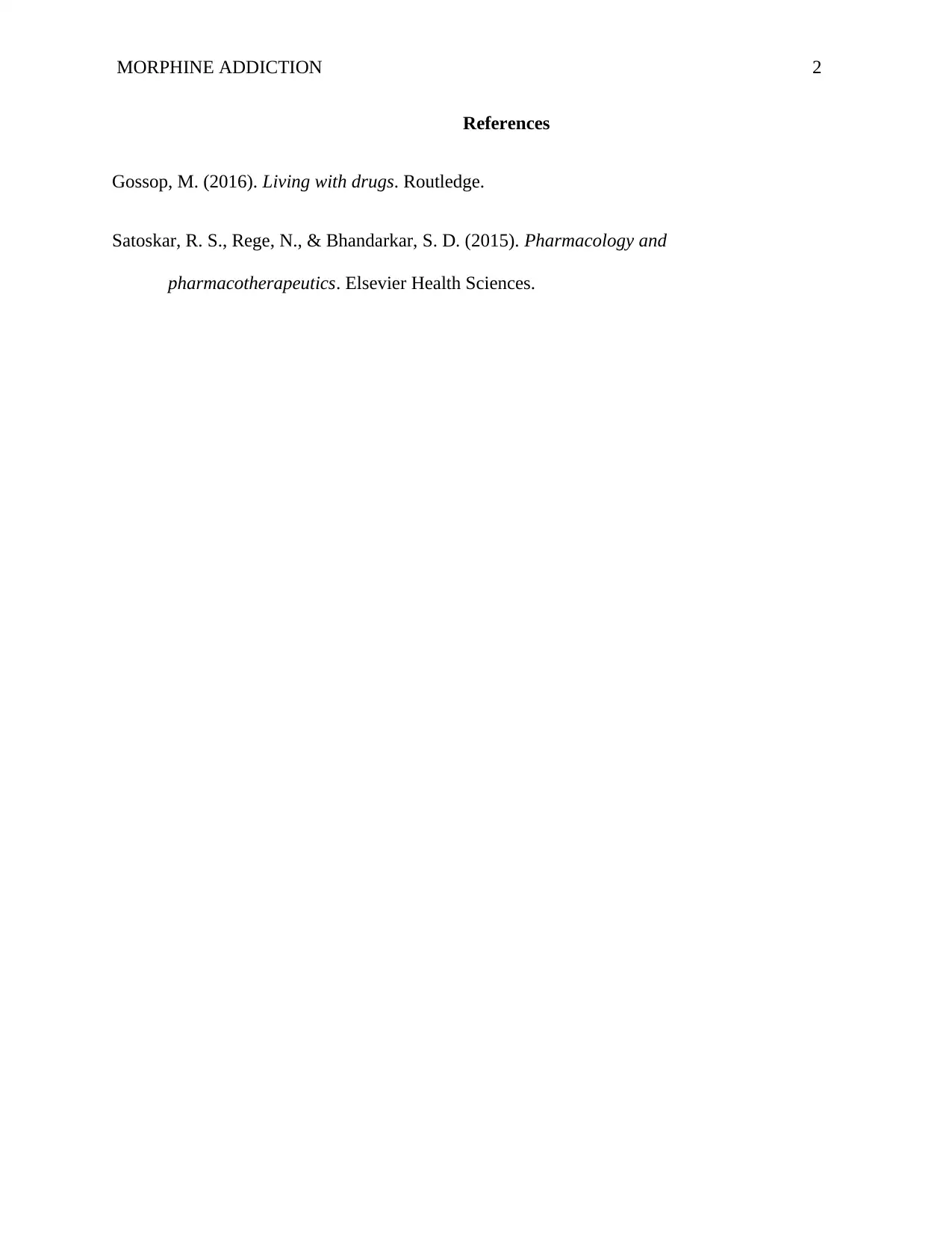Report on Morphine Addiction: A Comprehensive Overview
VerifiedAdded on 2023/04/21
|4
|465
|407
Report
AI Summary
This report examines morphine addiction, a significant issue in healthcare. It begins by defining morphine and its role as a pain reliever, highlighting its potential for abuse due to its euphoric effects. The report delves into the causes of morphine addiction, emphasizing its misuse through high doses or mixing with other substances like alcohol, and identifies the demographic most affected. The report also discusses the dangers of morphine abuse, including its impact on health and the importance of prevention. Finally, it provides practical strategies for preventing morphine addiction, such as educating individuals about the risks, securing the drug, and monitoring the behavior of friends and family. The report references relevant sources to support its claims.
1 out of 4











![[object Object]](/_next/static/media/star-bottom.7253800d.svg)